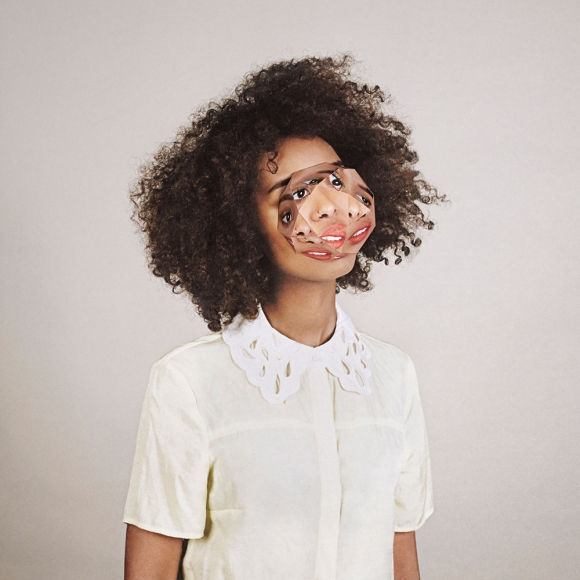Alma Haser’s “Cosmic Surgery” at De Soto Gallery
- artandcakela
- Dec 24, 2016
- 2 min read

Alma Haser, “Cosmic Surgery” Photo Courtesy of De Soto Gallery Venice, CA
Alma Haser’s “Cosmic Surgery” at De Soto Gallery
By Jody Zellen
Through December 31st
Origami is the art of folding paper, transforming a flat sheet into a sculptural form. In her suite of portraits entitled Cosmic Surgery, London based photographer Alma Haser covers her sitter’s faces with a three dimensional form using origami folds, crafted from paper printed with multiple photographs of her subject’s eyes and mouth. This complex geometric shape is affixed atop the original image resulting in portraits that are unsettling and surreal. The series stems from Haser’s investigation into the nuances of cosmetic surgery— the desire to change one’s features and attributes. Entitled Cosmic rather than Cosmetic Surgery, shifts the emphasis to something otherworldly. Haser imposition of something other atop her subject’s face, transforms them into exaggerated fictions.
Augmented three quarter view portraits of friends and acquaintances encircle the gallery. They are presented as either two or three-dimensional renditions as often Haser rephotographs the three-dimensional collage to create a digitally printed flattened image. Each portrait is given the title of Patient and a number, indicating that the sitters are willing subjects for these alterations and that Haser’s doctoring of the image is a betterment. The folded forms are impeccably crafted, creating an off-kilter dimensionality that suggests movement and simultaneity.
That Haser’s portraits reference Cubism is undeniable. The images are broken apart and reassembled into abstract forms as if seen through a kaleidoscope. For example in Patient No. 4, 2014-2016 a young woman in a scoop-necked red floral dress gazes to her left. Her reddish-brown hair is gathered above her ears. In the middle of her face sits a flower-like paper sculpture composed of myriad eye and mouth fragments positioned every which-way within the object. This origami flower obscures the sitter’s facial features, turning her into something alien and unknown. Patient No. 12, is dressed in a white shirt with a red, white and blue bow-tie and photographed against a neutral background. He tilts his head to the right and appears to gaze in that direction, though his eyes are blocked by the collaged 3D element. A six-sided origami shape filled with cropped sections of his eyes and nose covers the top of his face but not his lips, creating tensions between the augmented and actual forms.
The intricacies of the folded object are so complex and intriguing that it is easy to get caught in the wonders of the forms (which Haser also exhibits on their own). The psychological implications however are ambiguous as Haser provides no context for the alterations. In many ways the works successfully defamiliarize the expected by asking viewers to look anew at traditional portraiture. However, as of yet, the pieces do not transcend the elaborate process of their creation.
#losangeles #california #losangelesartist #art #fineartphotography #review #losangelesart #contemporaryart #portraiture #almahaser #southerncalifornia #abstract #collage #JodyZellen #portrait #photography #Venice #origami #gallery #contemporaryportraiture #artandcake #artexhibition #ArtandCakeLA #fineart #artists #artist #soloshow #mixedmedia #arts #artreview #artexhibit #surreal #exhibition #portraits #exhibit #CosmicSurgery #losangelesgallery #DeSotoGallery #patient










































